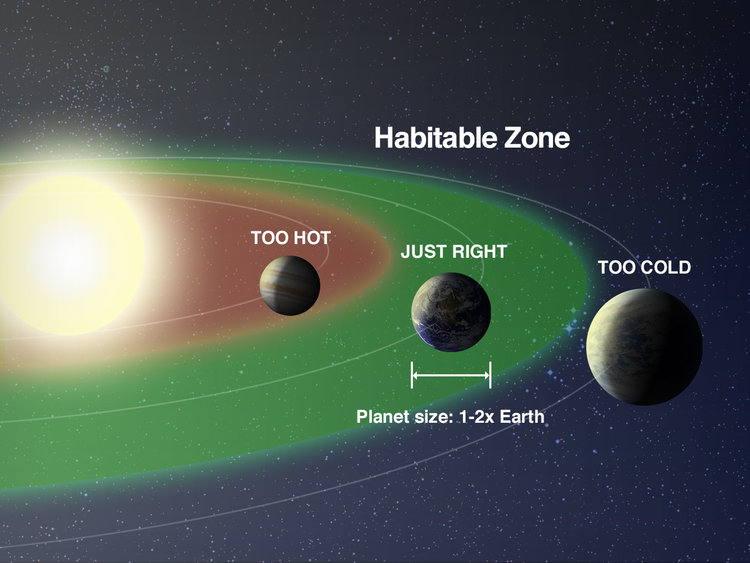The Quest for Life's Oasis: Goldilock Zones

What is it?
It is a region around a star where an orbiting planet can have the right conditions - as in not too cold and not too hot - to sustain water. If a planet is too far from the star, the water might freeze and if too close, the water might turn to steam. It is also called the habitable zone.
Why is it called “Goldilocks”?
It is inspired by the character Goldilocks from the story "Goldilocks and the Three Bears." In the tale, Goldilocks enters the bears' house and tries their porridge, chairs, and beds, finding one that is “just right” for her in each case. Similarly, in astronomy refers to the region around a star where conditions are "just right" for liquid water to exist on the surface of a planet Hence, it's a lighthearted way to describe this region where conditions are just right for habitability.
Why is water important?
Water is highly crucial for life on Earth because it helps dissolve substances such as chemicals etc. This means it can mix with different materials like salts, sugars, and gases. The process of dissolution in water entails the equal dispersion of solute particles throughout the solvent, resulting in a uniform distribution. This is essential for living things because it helps nutrients and other important components move around in our bodies and cells. Moreover, water helps with important chemical reactions that keep us alive, like breaking down food for energy or building new cells.
Water on other planets
Water exists in several different forms on other planets. These include:
Mars: has polar ice caps made of water or ice
Enceladus (one of Saturn's moons): geysers spewing water vapour and icy particles from its south pole
Europa (one of Jupiter's moons): thick icy crust and there is believed to be a global ocean of liquid water beneath it
Exoplanets:Scientists think that more than a quarter of the exoplanets we know about might have liquid water. They might have oceans hidden beneath their surface, similar to what we see on moons like Europa and Enceladus in our own solar system. There are many exoplanets discovered to date that are situated within the habitable zones of their respective stars e.g. Kepler-186f.
Similar Post You May Like
-

CFCs, HFCs and their long, troubled history
At its peak, the ozone hole covered an area 7 times larger than the size of Europe, around 29.9 million km2, and was rapidly expanding
-

The Origin of Universe: Deciding point where it all began!
Let us unravel and surf through the ideas throughout ages to understand what the universe and its origin itself was to its inhabitants across history.
-

The Artemis Program
Inspired by the Greek goddess of the Moon, twin sister to Apollo, the artimis program was named on 14 May 2019 by Jim Bridenstine.







